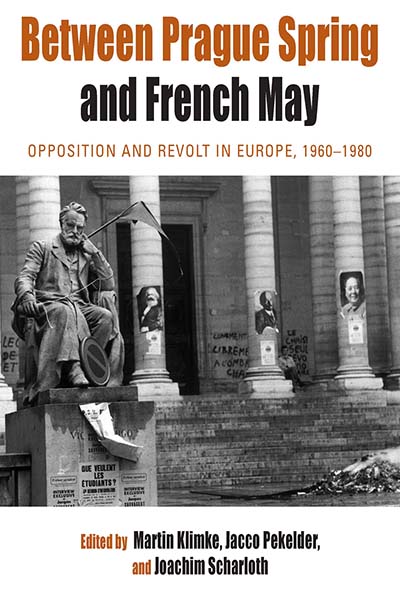Southern Constellations: The Poetics of the Non-Aligned (2019) [Slovenian, English]
Filed under catalogue | Tags: · colonialism, non-aligned movement, politics, yugoslavia

“This catalogue emphasises the ideas, ideals and principles of the movement, particularly in close connection with its cultural policies and place them in a contemporary context with the question: Could there be a non-aligned contemporaneity? And if so, what would it be like? However, the topics covered in the exhibition are not to be considered some kind of exoticism of the past, nor do they harbor nostalgia for the movement itself. Instead, the focus is on the way the “southern constellations” envisioned forms of politics that took as their starting point the life of peoples and societies that had been forcibly relegated to the margins of the global economic, political and cultural system. Struggles against poverty, inequality, and colonialism in the world system coupled with transnational solidarity which took many concrete forms could be included in a reconsideration of the history and legacies of the NAM today.”
Edited by Tamara Soban
Publisher Moderna galerija, Ljubljana, 2019
ISBN 9789612061371 (EN)
188 pages
English: PDF, PDF
Slovenian: PDF, PDF
Between Prague Spring and French May: Opposition and Revolt in Europe, 1960-1980 (2011)
Filed under book | Tags: · 1960s, 1968, 1970s, history, media, non-aligned movement, politics, protest, resistance

“Abandoning the usual Cold War–oriented narrative of postwar European protest and opposition movements, this volume offers an innovative, interdisciplinary, and comprehensive perspective on two decades of protest and social upheaval in postwar Europe. It examines the mutual influences and interactions among dissenters in Western Europe, the Warsaw Pact countries, and the non-aligned European countries, and shows how ideological and political developments in the East and West were interconnected through official state or party channels as well as a variety of private and clandestine contacts. Focusing on issues arising from the cross-cultural transfer of ideas, the adjustments to institutional and political frameworks, and the role of the media in staging protest, the volume examines the romanticized attitude of Western activists to violent liberation movements in the Third World and the idolization of imprisoned RAF members as martyrs among left-wing circles across Western Europe.”
Edited by Martin Klimke, Jacco Pekelder and Joachim Scharloth
Publisher Berghahn Books, New York, 2011
Protest, Culture, and Society series, 7
ISBN 9780857451064, 0857451065
vi+347 pages
via publisher
Reviews: Caroline Hoefferle (J Study of Radicalism, 2012), Benoît Challand (Memory Studies, 2013), Rosemary H.T. O’Kane (Political Studies Rev, 2013), Sarah Žabić (Peace&Change, 2013), Matthias Dapprich (J Cold War Studies, 2014), Francis D. Raška (European Legacy, 2016).
Comment (0)Armin Medosch: New Tendencies: Art at the Threshold of the Information Revolution, 1961–1978 (2016)
Filed under book | Tags: · art history, computer art, conceptual art, cybernetics, neo-avant-garde, new art practice, new tendencies, non-aligned movement

“New Tendencies, a non-aligned modernist art movement, emerged in the early 1960s in the former Yugoslavia, a non-aligned country. It represented a new sensibility, rejecting both Abstract Expressionism and socialist realism in an attempt to formulate an art adequate to the age of advanced mass production. In this book, Armin Medosch examines the development of New Tendencies as a major international art movement in the context of social, political, and technological history. Doing so, he traces concurrent paradigm shifts: the change from Fordism (the political economy of mass production and consumption) to the information society, and the change from postwar modernism to dematerialized postmodern art practices.
Medosch explains that New Tendencies, rather than opposing the forces of technology as most artists and intellectuals of the time did, imagined the rapid advance of technology to be a springboard into a future beyond alienation and oppression. Works by New Tendencies cast the viewer as coproducer, abolishing the idea of artist as creative genius and replacing it with the notion of the visual researcher. In 1968 and 1969, the group actively turned to the computer as a medium of visual research, anticipating new media and digital art.
Medosch discusses modernization in then-Yugoslavia and other nations on the periphery; looks in detail at New Tendencies’ five major exhibitions in Zagreb (the capital of Croatia); and considers such topics as the group’s relation to science, the changing relationship of manual and intellectual labor, New Tendencies in the international art market, their engagement with computer art, and the group’s eventual eclipse by other “new art practices” including conceptualism, land art, and arte povera. Numerous illustrations document New Tendencies’ works and exhibitions.”
Based on 2012 dissertation from Goldsmiths, University of London.
Publisher MIT Press, 2016
Leonardo series
ISBN 9780262034166, 0262034166
x+395 pages
Reviews: Oliver Schürer (Versorgerin, 2016, DE), Paula Barreiro López (Critique d’art, 2016, FR), Kristian Lukić (Furtherfield, 2017), Tomáš Glanc (Tech & Culture, 2017), Adair Rounthwaite (Art Bulletin, 2018), Adair Rounthwaite (Art Bulletin, 2018), Ivana Bago (ARTMargins, 2019).
HTML
PDF (added on 2022-10-11)

